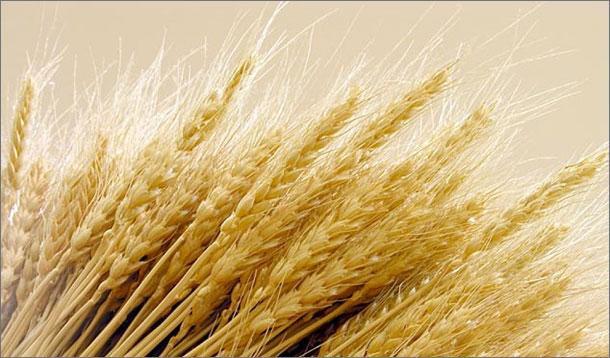
There is a wide range of gluten issues ranging from diagnosed Celiac disease and suspecting that when you avoid gluten, you feel better. I recently interviewed Dr. Davis, author of Wheatbelly about the effects of wheat, gluten being just one. But gluten, all on its own, also carries a rather mighty wallop to our health if we are one of the many that have noticed sensitivities.
Why are so many of us suddenly sensitive to gluten?
According to a 2009 study, the prevalence of undiagnosed Celiac disease seems to have increased dramatically during the past fifty years. The current estimate according to 133.org is that one in 133 Americans have celiac and another 18 million have some form of non-Celiac gluten sensitivity. The reasons for this, though somewhat unconfirmed, is due to the massive increase in gluten-containing foods in our processed standard diet combined with a modification of the grain itself to contain a higher gluten concentration.
Gluten is a protein present in wheat, spelt, kamut, barley, rye, and some oats. It’s gunky and glue-like and explains why you can roll a slice of processed white bread into a gooey little ball. It often gunks up the lining of the intestines making it tougher to absorb the nutrients from our food, and it can contribute any number of physical health symptoms from mood swings to constipation.
You may be surprised to find this thick, clumpy gunk lurking in places you wouldn’t expect and causing mood swings, headaches, and extra junk in your trunk. Cutting out your favourite cookies and cakes is tough enough—you don’t want to be unknowingly sabotaging your heroic efforts.
Check out the list of surprising sources of gluten below to make sure you aren’t accidentally eating more of it than you think.
1. Shampoo
Many gluten-containing ingredients are considered to be healthy for the hair, including ingredients made from wheat, barley, and rye. Watch out for shampoos that include any of those grain-based oils, or oat-based ingredients, as the oats they use may not be gluten-free. What you scrub into your scalp does get inside your body, so choose carefully. Dr. Bronner’s soaps and leave-in conditioners are gluten-free.
2. Chewing Gum
Some brands use flour to coat pieces of gum to keep them from sticking to the packages. Check the brand’s website to be sure (we like PÜR GUM for gluten-free chewing) or chew on a sprig of fresh mint or a piece of ginger instead. Most commercial gums contain artificial sweetener, so that’s reason enough to stay away.
3. Flavoured Potato Chips
Potato chips should technically be gluten-free, but many potato chip flavorings contain gluten (or the chips get contaminated with gluten in processing). Not that you’re eating them anyway, right? Chomp on gluten-free kale chips instead.
4. Soy Sauce
Did you know regular soy sauce contains wheat? Try organic, wheat/gluten-free tamari instead, or get a little adventurous and sample some coconut aminos.
5. Salad dressings
Many salad dressings use gluten-containing ingredients as thickeners. Try making your own salad dressing instead.
7. Store-Bought Sauces
Many packaged and canned sauces contain gluten as a thickener (not to mention artificial colours, flavours and MSG). Try making your own gluten-free sauces instead, like this Almond Dipping Sauce.
8. Puddings and Pie Filings
Many puddings and pie fillings contain gluten-based thickeners. The best pie filling is plain old fruit (maybe with a little bit of natural sweetener like honey). If you do need a thickener, arrowroot starch is a great gluten and corn free option. And if you need a gluten-free pie crust, this one rocks.
9. Mustard
Some prepared mustards contain wheat flour. Check the ingredients label to make sure yours doesn’t.
10. Deli Meats
While meat is generally safe on a gluten-free diet, ready-to-eat or ready-to-cook meats can sometimes contain unsafe sauces or bread crumbs. Choose organic, local, fresh meats instead. Besides, deli meats are just plain creepy.
11. Whole Grains
Many whole grains such as couscous and spelt seem safe to eat, but they actually aren’t. Watch out for orzo, rye bread, triticale, and kamut, too—they all contain gluten.
12. Ground Spices
Many spice mixes (curry powder, Cajun spice mix, etc.) contain gluten as an anti-caking agent. Try making your own mixes from pure, whole spices instead!
13. Instant Coffee and Other Drinks
Many instant coffee brands contain gluten as a bulking agent and powdered milk also contains wheat. There are great instant coffee alternatives. Dandy Blend is very popular which is certified gluten-free, or try out these super cool instant chaga and reishi beverages from Four Sigma Foods. Be sure to try out this UnCoffee recipe while you’re at it.
14. Canned Soups
Many canned soups contain wheat-based thickeners and loads of other preservatives. Try and get organic versions in cartons instead of cans, and watch out that the only ingredients are the vegetables (maybe meat bones) and sea salt. Of course, you can always make your own and freeze it. Here’s a great vegetable soup and another amazingly healing bone broth.
15. Licorice
Some licorice brands includes wheat flour as a binding agent.
16. Alcohol
Many alcohols are made from gluten-containing grains. While the distillation process should theoretically get rid of gluten proteins, not all companies distill their products thoroughly enough to do so. Check the company’s website or enjoy a gluten-free mocktail instead.
17. Caramel Colour
Depending on the way it’s manufactured, caramel colour may or may not contain gluten. Best to steer clear of the whole business and stick to whole, unprocessed, artificial, and natural colour-free and flavour-free foods instead.
If you are interested in trying going gluten-free, even just for sixteen days, check out this guided online Gluten-Free Renewal Cleanse.